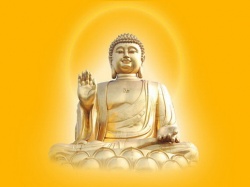Difference between revisions of "Valabhī"
| Line 1: | Line 1: | ||
[[File:Db099.jpg|thumb|250px|]] | [[File:Db099.jpg|thumb|250px|]] | ||
| − | [[Valabhī]] is now a small town a few kilometers inland from the [[east]] coast of the Gulf of Cambay in {{Wiki|western}} [[India]]. In {{Wiki|ancient}} times it was the capital of the Maitraka {{Wiki|kingdom}} (490-770) and together with [[Nāḷandā]] was the greatest centre of [[Buddhist]] [[education]] in the {{Wiki|ancient}} [[world]]. [[Valabhī]] was not a single {{Wiki|university}} like [[Nāḷandā]] but a collection of [[monasteries]] in and around the city that acted something like separate {{Wiki|colleges}}. Some of the more famous of these were [[Bappāpādiya]], [[Duḍḍā]], [[Gohaka]], [[Kākā]], [[Vaṃsakata]], [[Vimalagupta]] and [[Yakṣaśora]]. There were also several [[monasteries]] specifically for the [[education]] of [[nuns]]; [[Yakṣaśūra]], [[Pūrmmabhatti]] and [[Ajita]] being the main ones. The two most-renowned of [[Valabhī]] [[scholars]] were [[Guṇamati]] and [[Sthiramati]] whose writings were studied throughout [[India]] and translated into {{Wiki|Chinese}} and [[Tibetan]]. When the {{Wiki|Chinese}} [[pilgrim]] [[Hiuen Tsiang]] visited [[Valabhī]] he noted that there were about 6000 [[monks]] in the city’s [[monasteries]]. Another {{Wiki|Chinese}} [[pilgrim]] in [[India]], [[I-tsing]], noted that what when a [[monk]] had finished his normal studies and wanted to learn more he went to either [[Valabhī]] in the [[west]] or [[Nāḷandā]] in the [[north]]. While [[Nāḷandā]] was for the study of [[Mahāyāna]] and [[Odantapuri]] for [[Vajrayāna]], [[Valabhī]] specialized in ‘[[Hīnayāna]]’ or [[early Buddhism]]. [[Valabhī’s]] end came when the Arabs invaded {{Wiki|Sindh}} at the end of the 8th century. So complete was the destruction that not even any ruins of the city’s famous [[monasteries]] have been found. | + | [[Valabhī]] is now a small town a few kilometers inland from the [[east]] coast of the Gulf of Cambay in {{Wiki|western}} [[India]]. In {{Wiki|ancient}} times it was the capital of the Maitraka {{Wiki|kingdom}} (490-770) and together with [[Nāḷandā]] was the greatest centre of [[Buddhist]] [[education]] in the {{Wiki|ancient}} [[world]]. [[Valabhī]] was not a single {{Wiki|university}} like [[Nāḷandā]] but a collection of [[monasteries]] in and around the city that acted something like separate {{Wiki|colleges}}. Some of the more famous of these were [[Bappāpādiya]], [[Duḍḍā]], [[Gohaka]], [[Kākā]], [[Vaṃsakata]], [[Vimalagupta]] and [[Yakṣaśora]]. There were also several [[monasteries]] specifically for the [[education]] of [[nuns]]; [[Yakṣaśūra]], [[Pūrmmabhatti]] and [[Ajita]] being the main ones. The two most-renowned of [[Valabhī]] [[scholars]] were [[Guṇamati]] and [[Sthiramati]] whose writings were studied throughout [[India]] and translated into {{Wiki|Chinese}} and [[Tibetan]]. When the {{Wiki|Chinese}} [[pilgrim]] [[Hiuen Tsiang]] visited [[Valabhī]] he noted that there were about 6000 [[monks]] in the city’s [[monasteries]]. Another {{Wiki|Chinese}} [[pilgrim]] in [[India]], [[I-tsing]], noted that what when a [[monk]] had finished his normal studies and wanted to learn more he went to either [[Valabhī]] in the [[west]] or [[Nāḷandā]] in the [[north]]. While [[Nāḷandā]] was for the study of [[Mahāyāna]] and [[Odantapuri]] for [[Vajrayāna]], [[Valabhī]] specialized in ‘[[Hīnayāna]]’ or [[early Buddhism]]. [[Valabhī’s]] end came when the {{Wiki|Arabs}} invaded {{Wiki|Sindh}} at the end of the 8th century. So complete was the destruction that not even any ruins of the city’s famous [[monasteries]] have been found. |
Historical Inscriptions of Gujerat, G. S. Vallabhaji, 1935. | Historical Inscriptions of Gujerat, G. S. Vallabhaji, 1935. | ||
Latest revision as of 08:14, 26 August 2014
Valabhī is now a small town a few kilometers inland from the east coast of the Gulf of Cambay in western India. In ancient times it was the capital of the Maitraka kingdom (490-770) and together with Nāḷandā was the greatest centre of Buddhist education in the ancient world. Valabhī was not a single university like Nāḷandā but a collection of monasteries in and around the city that acted something like separate colleges. Some of the more famous of these were Bappāpādiya, Duḍḍā, Gohaka, Kākā, Vaṃsakata, Vimalagupta and Yakṣaśora. There were also several monasteries specifically for the education of nuns; Yakṣaśūra, Pūrmmabhatti and Ajita being the main ones. The two most-renowned of Valabhī scholars were Guṇamati and Sthiramati whose writings were studied throughout India and translated into Chinese and Tibetan. When the Chinese pilgrim Hiuen Tsiang visited Valabhī he noted that there were about 6000 monks in the city’s monasteries. Another Chinese pilgrim in India, I-tsing, noted that what when a monk had finished his normal studies and wanted to learn more he went to either Valabhī in the west or Nāḷandā in the north. While Nāḷandā was for the study of Mahāyāna and Odantapuri for Vajrayāna, Valabhī specialized in ‘Hīnayāna’ or early Buddhism. Valabhī’s end came when the Arabs invaded Sindh at the end of the 8th century. So complete was the destruction that not even any ruins of the city’s famous monasteries have been found.
Historical Inscriptions of Gujerat, G. S. Vallabhaji, 1935.
